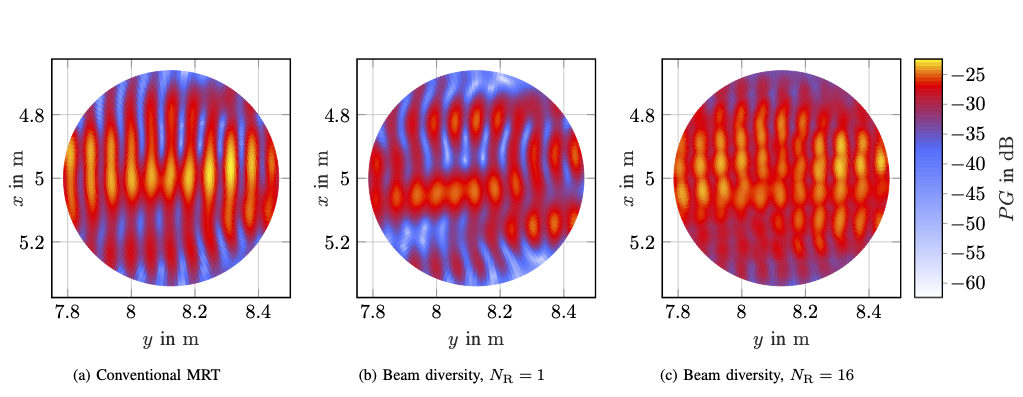Location-based Initial Access for Wireless Power Transfer with Physically Large Arrays
- Published
- Mon, Aug 01, 2022
- Tags
- rotm
- Contact

Within the REINDEER H2020 project, we investigate the potential of using physically large, or distributed antenna arrays to transmit power wirelessly to batteryless energy neutral (EN) devices. An enabling milestone to make the technology feasible is solving the initial-access problem, i.e., waking up an EN device with unknown channel state information (CSI).
One possible approach for initial access is beam sweeping, where the transmit array sweeps beams sequentially according to a predefined codebook to power up an EN device for the first time. However, beam sweeping in indoor scenarios suffers from fading due to severe multipath propagation, possibly originating from unknown objects in the environment. In our paper, we exploit environment-awareness to predict CSI. We establish a simultaneous multibeam transmission which intentionally leverages specular reflections to illuminate an EN device and improve its power budget over what is achievable using a single line-of-sight beam only. We vary the phases of the individual beams to influence the locations of deep fades and to reduce the necessary fading margin. The lower necessary fading margin increases the initial access distance of EN devices.
This work was presented at the 2022 International Conference on Communications (ICC) in Seoul and is now available on IEEE and arXiv.
Browse the Results of the Month archive.
